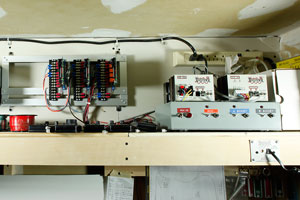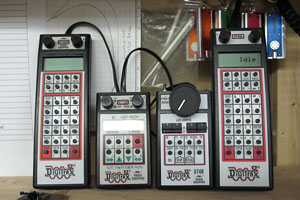Control of the motive power on the CWRy is achieved with the use of Digitrax DCC boosters, controller and throttles. I've been using Digitrax controls since they were introduced and have been very pleased with their reliability and features. The system has had improvements and enhancements as time has progressed in order to keep up and sometimes lead in the part of the hobby. Many may argue that other manufacturers make a better system but that debate is best left for other websites and blogs to get into. As far as for myself I believe that the system that has the features you want and works for you is the best choice regardless of the brand. One important consideration when choosing a DCC system is to make up your mind early as the main components such as the boosters, controllers, throttles and other pieces tend to be proprietary to a single manufacturer. The decoders installed in the engines or used on the layout can be made by a number of manufacturers as this is the one common area were the industry standards are usually followed. My early adoption of the Digitrax system makes it a logical choice for me.
The decoders are from various suppliers including Digitrax, SoundTrax, Broadway Limited and Bachmann. Most of my larger locomotives also have a coupled or built-in sound decoder adding to the atmosphere when operating the layout. Sounds on these locomotives include steam chuffs, whistles, bells, flange squealing, air compressors and so on.
In the first of the following images the grey box on the right has two light grey boxes mounted on top of it. One of the boxes is the main controller that is referred to as a command station and booster. The second box is just a booster used to increase the available power to the rails. Mounted to the left of this is three vertically mounted power management cards, one PM4 and two PM44's, along with terminal strips attached to an aluminum frame. The power management cards each have four separately programmable sections that can be configured to work as adjustable current level breakers or reversing sections. I have a combination of these settings for my layout. In the second of these images the various type of throttle controls are shown. Left to right they are DT400R, DT100, UT4R (these three types are radio equipped for wireless operation) and a DT400.

